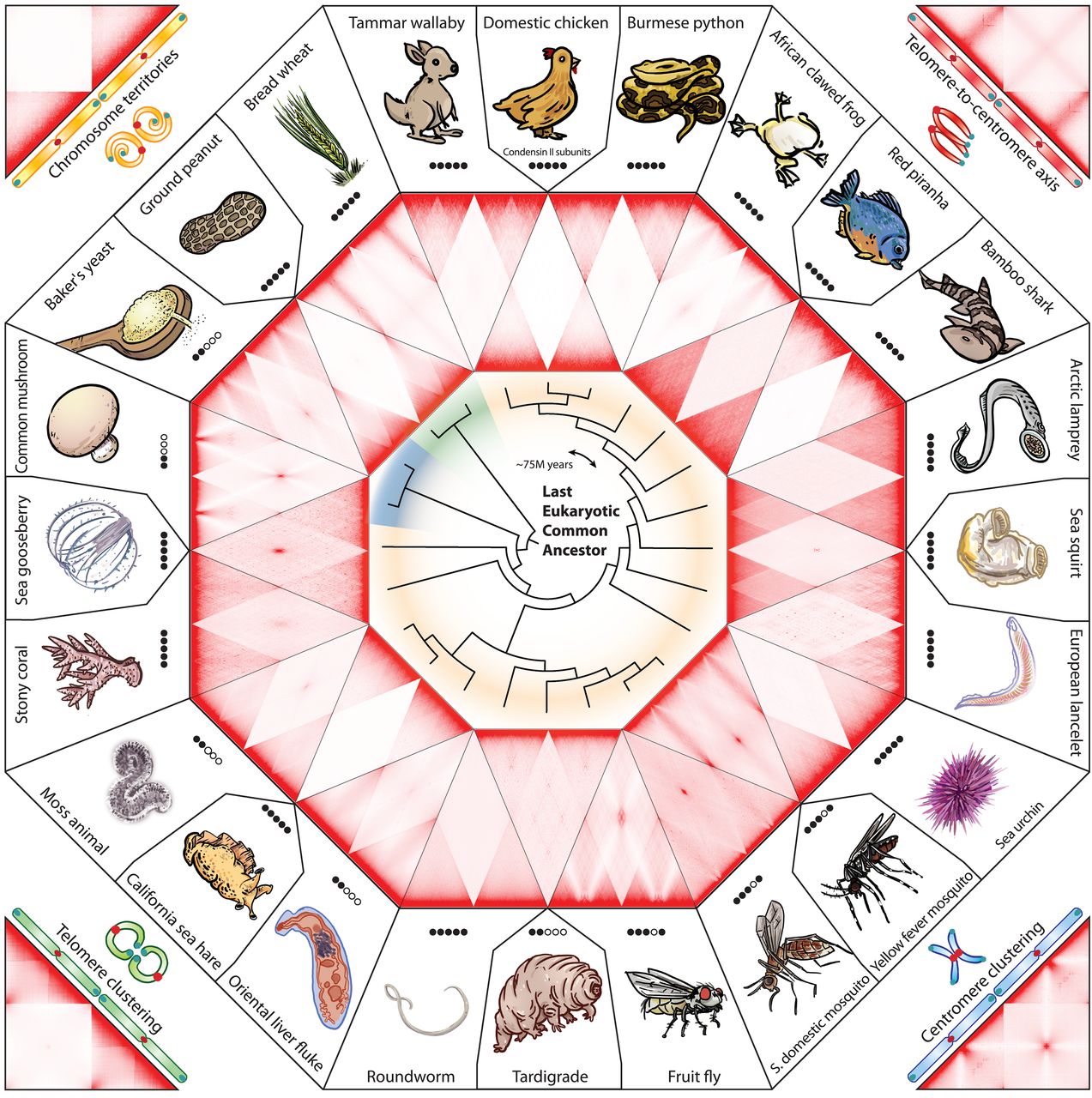 The Whitney Laboratory for Marine Bioscience
The Whitney Laboratory for Marine Bioscience

Whitney's Distinguished professor Dr. Leonid Moroz and researcher Dr. Andrea Kohn published in Science on 3D resolution genomes with a multidisciplinary team.
Amazing gifts from Nature revealed the logic of 3D genome regulations in humans and beyond. Our genome is compacted in a tiny nucleus in each of 100 trillion cells. But if DNA from ALL cells in a human body stretches to its total length, it will be possible to make more than 1000 loops from Earth to Sun. How is our genome compacted and regulated? An interdisciplinary team (Hoencamp et al. May 28, Science, 2021, including the University of Florida/Whitney Lab (Prof. Leonid L. Moroz and Dr. Andrea Kohn), reconstructed of twenty four genomes at three dimensional resolution (3D).
The list includes the prominent models for deciphering mechanisms of memory and regeneration such as sea slugs and comb jellies. As a result, the team discover a limited number of solutions of Mother Nature implemented to the packing of genomes. Inspired by these gifts of Nature, the team showed that modifying the expression of these proteins can convert the human genome to a state resembling that seen in organisms such as fungi or mosquitoes. These findings have long-lasting implications for understanding chromosomal disorders, cancer, and memory.
Equally important this is the first step to make a “Periodic System of Cell Nuclei”, and eventually “Periodic System of Cell Types and Neurons” (Moroz, 2018) which can be conceptually similar to the Periodic System of Chemical Elements with a predictive power.